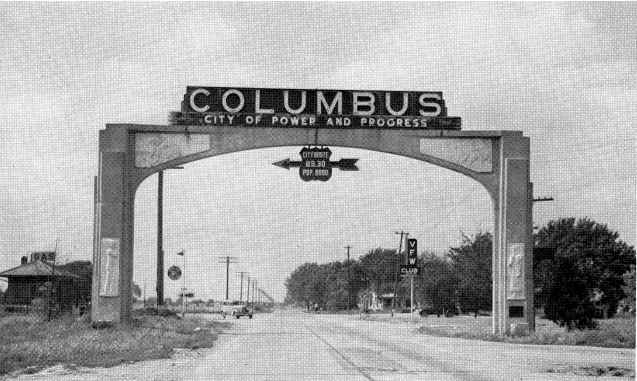
NEGenWeb Project
Resource Center
On-Line Library
CHAPTER THIRTY
Today, as a nation of visitors enter the portals of Columbus on the United States Highways 30 from the East and 81 from the South, the community welcomes them through its famous archways located at Twenty-third Street and Twenty-third Avenue, and on Thirty-third Avenue. These arches, which were made possible by the donation of one of Columbus' pioneer merchants, Theodore Friedhof, were conceived and dedicated in 1940 on the Eighty-fifth Anniversary and Homecoming celebration held one year previous in Columbus.
Supported by two pylons, the arches bear the motto, "Columbus --- City of Power and Progress," a slogan created by Julian E. Meyer, Jr., son of Doctor Julian E. Meyer, a member of the original Loup River Public Power Board. Floyd F. Nichols, of David City, was the sculptor of the figures on the arches of the main gateway, while the design itself was originated by Frank Willsey, of Omaha, formerly employed by the Loup River Public Power District.
The figures represent an Indian, a buffalo and a prairie schooner, touchstones of Columbus' past. These symbols of early travel are combined with an Indian brave, his squaw, and papoose, the first inhabitants of Platte County.
Four of the five squares originally laid out at the time of the platting of Columbus as a town are still standing: Buffalo, Frankfort, Hanover and Berne Squares. Columbia Square, in the center of the original town plat, was the site of the first court house, located between Ninth and Tenth Streets, on Washington Avenue. In 1922, Columbia Square was sold for residences. These early squares took the place of village greens or-

The gateway to Columbus, at Twenty-third Street and Twenty-third Avenue
[The 1925 plat of Columbus Nebraska - Click on map for LARGE view]
| © 2005 for the NEGenWeb Project by Ted & Carole Miller |
|||